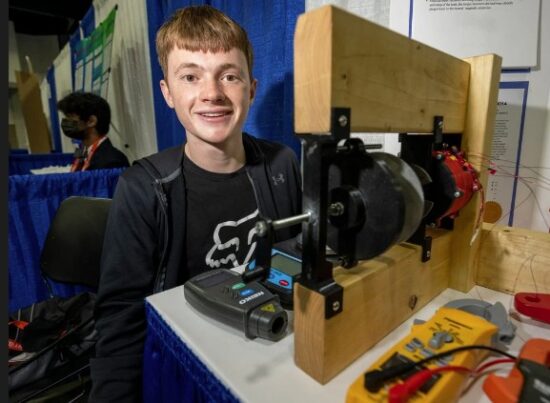Electric vehicle (EV) adoption remains out of reach for the majority. Why? Because of vehicle cost, a lack of charging infrastructure, continued range anxiety, and manufacturers continuing to spend much more on vehicles using internal combustion engines (ICE). Another impediment to widespread adoption is the sourcing of the rare-earth materials needed for EVs. Even with government subsidies to defray some of the cost of purchasing an EV, this is a transportation solution mainly for those who are tech early adopters or have deep pockets.
But a 17-year-old Fort Pierce, Florida, student named Robert Sansone believes he may have invented an electric motor that doesn’t require rare-earth materials and resembles the electric motors found in fans. These are known as synchronous reluctance motors (SRM) and along with direct current engines are found in most home appliances.
If you have ever looked at the SRM that powers a fan, (I have one running right now in my office as I write this posting,) it consists of a copper wire coil and a central steel rotor. What causes the fan to rotate is the interaction of two opposite forces, one a rotating magnetic field, the other the steel rotor.
SRM technology has never been considered a contender for use to power an EV. The motors just don’t produce enough rotational force required or torque. But what SRMs don’t require are the expensive rare earths found in today’s EV motors. These go by various exotic names such as neodymium, samarium, dysprosium, and others. And right now China has the market cornered and controls the prices for these minerals.
Getting back to Mr. Sansone, he began experimenting with SRMs introducing an additional magnetic field into the motor to produce more torque. He has gone through 15 prototypes and is ready to file a patent for the current one which is a working scale model built using parts produced by a 3D printer.
Model 15 generates 39% greater torque and is 31% more efficient at 300 revolutions per minute (RPM). And at 750 RPMs the efficiency is 37% greater.
A 16th design is currently under construction and made of materials that can handle even higher RPMs and the heat the rotations produce. He’s shooting for 18,000 RPMs, the rotational speed of Teslas Model S electric motor.
Mr. Sansone is a senior at Fort Pierce Central High School. He has dreams of going to the Massachusetts Institute of Technology (MIT). At the most recent Regeneron International Science and Engineering Fair, a high-school STEM competition with entries from around the world, his invention won first prize and $75,000 cash which he hopes will help begin to pay for his post-secondary education.
In a recent issue of The Smithsonian Magazine, Margaret Osborne writes about Sansone’s invention and quotes him stating, “Rare-earth materials in existing electric motors are a major factor undermining the sustainability of electric vehicles…Seeing the day when EVs are fully sustainable due to the help of my novel motor design would be a dream come true.”
Mr. Musk, look out. You may soon have a boy genius on your tail with a game-changing electric motor to plug into the competition.








